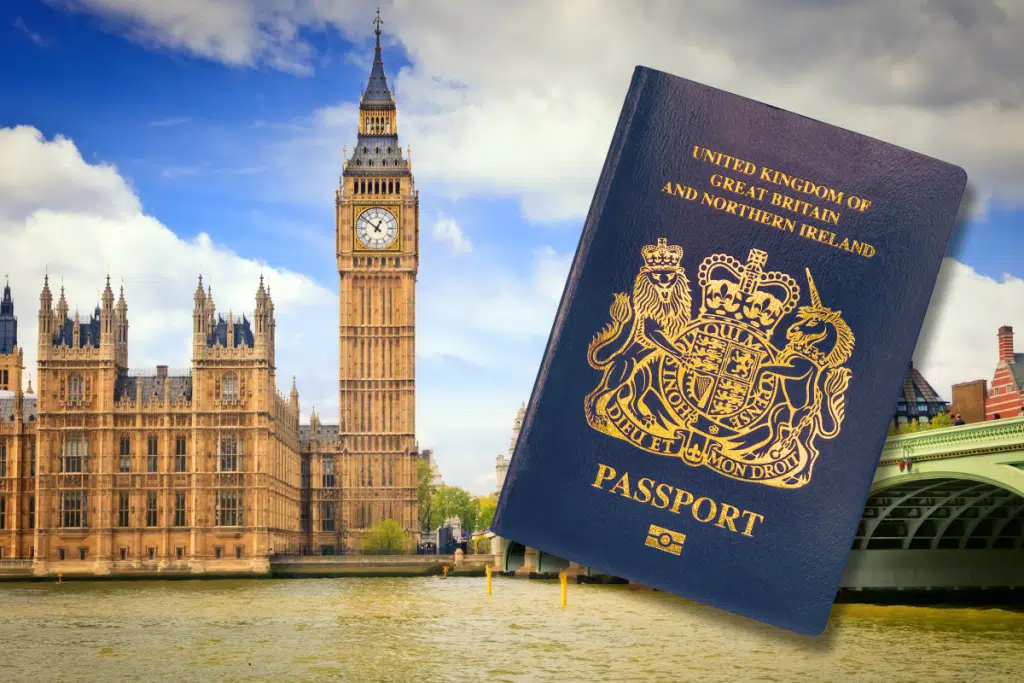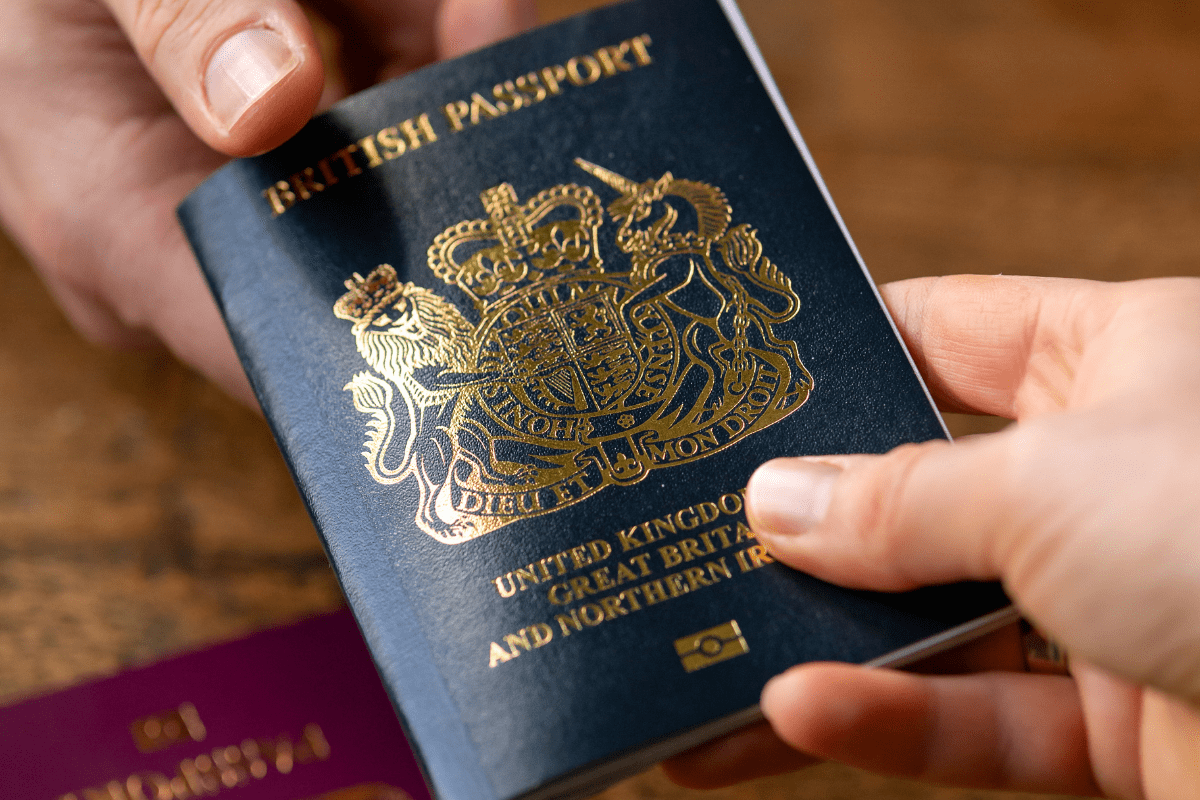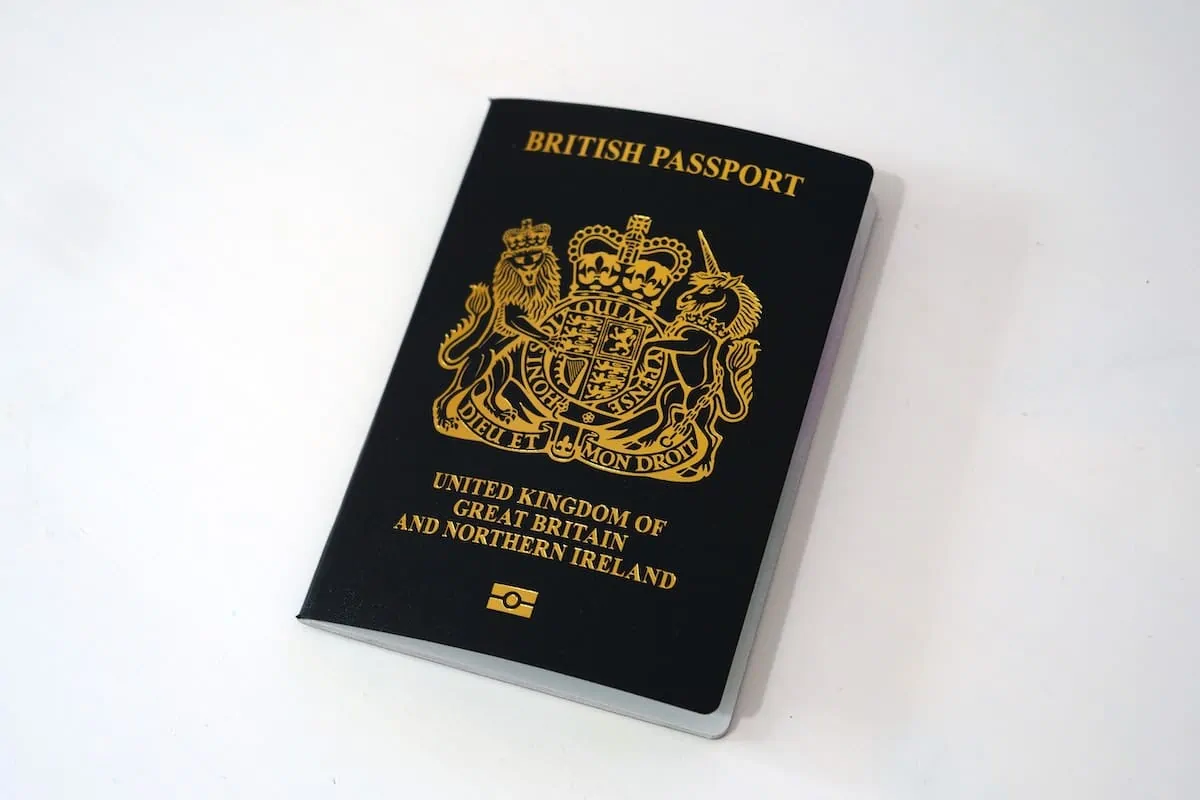Last Updated on April 1, 2025 by Tracey Roberts
Topic | Understanding the UK Passport Colour Change: History and Significance
For many, a passport is simply a travel document. But for UK citizens, the colour of their passport has long symbolised more than that—it reflects identity, history, and even political change. In recent years, the switch from burgundy back to blue has stirred curiosity and debate. So, what’s behind the UK passport colour change, and what does it mean for travellers today?
Let’s take a closer look at the history, reasons, and significance behind the shift—and what it means for British citizens both at home and abroad.

Key Takeaways
- The UK passport changed from burgundy to blue in March 2020, marking a symbolic step post-Brexit.
- The blue design reflects the UK’s passport from pre-EU times (pre-1988).
- While the colour has changed, burgundy passports remain valid until their expiry.
- The new passport includes advanced security features and a polycarbonate information page.
- Over 30 million blue passports have already been issued.
- For citizens abroad, the process and validity remain unchanged.
A Look Back: The History of the UK Passport
The UK passport has gone through several transformations since its inception. The modern passport system began in the early 20th century, but it wasn’t until 1920 that the first British passport in booklet form was introduced. This document was navy blue, a design that remained in use for over 60 years.
In 1988, as part of the UK’s membership in the European Union (EU), the colour changed to burgundy, matching the EU’s standard design. This uniformity aimed to simplify border control processes across member states. While it served a practical purpose, many saw it as a visual sign of shared European identity.
The Return to Blue: A Post-Brexit Symbol
In 2017, following the UK’s decision to leave the EU, the government announced the return of the blue passport. This move was framed as a way to restore a “national symbol” and reassert British sovereignty.
The new blue passport was officially introduced in March 2020, with the first issued to a British national in France. The government described the colour change as part of “embracing our future outside the EU.”
Why Blue?
According to HM Passport Office, the dark blue cover was chosen not just for tradition, but because it had historical significance. Blue was the colour of the British passport before EU membership and is now meant to reflect the UK’s independence and renewed global presence.
What’s Different in the New Passport?
While the colour is the most visible change, the blue UK passport also includes modern features to enhance security and durability:
- Polycarbonate data page: This replaces the old paper-based page, making forgery much more difficult.
- Tougher binding: Helps prevent tampering or unauthorised changes.
- UV printing and security threads: Used to reduce fraud and improve authentication at borders.
- Coat of arms redesign: Subtle changes to the crest’s presentation to reflect modern branding.
Despite the return to a classic look, the new passport is more high-tech and secure than ever.
Public Reaction and Statistics
Public response to the passport colour change has been mixed. According to a YouGov poll from 2016:
- 34% of Brits supported the return to blue.
- 43% opposed it.
- 23% were indifferent.
While some embraced the symbolic return to national colours, others felt the change was purely cosmetic and didn’t justify the costs or hype.
Nevertheless, by mid-2022, over 30 million blue passports had been issued to UK citizens.
Do You Need to Replace Your Burgundy Passport?
No. If you currently hold a burgundy passport, it remains valid until its expiry date. You don’t need to apply for a blue one unless:
- Your passport is expired.
- You are changing personal details.
- You’ve lost or damaged your current passport.
- You’re applying for your first adult passport.
When you do apply for a renewal or replacement, you’ll automatically receive the blue version.
Learn more about how to renew your UK passport abroad
Need help with replacing a lost or stolen passport?
What About British Citizens Living Abroad?
For UK citizens living outside the UK, the colour change may raise practical concerns. Rest assured:
- The passport process remains the same—applications can still be submitted online.
- The blue passport is recognised worldwide and complies with ICAO (International Civil Aviation Organization) standards.
- There is no difference in rights or status between burgundy and blue passports.
However, travellers should ensure their passports meet the entry requirements of other countries—some may require a certain number of blank pages or a minimum of 6 months’ validity.
FAQs: UK Passport Colour Change
Is the blue passport better than the burgundy one?
Functionally, they are the same. However, the blue passport includes improved security features and a more modern design.
Can I choose the colour of my new passport?
No. All new UK passports are now issued in blue.
Will the colour change affect my travel rights?
No. Your travel rights are determined by your citizenship and visa status, not the colour of your passport.

Final Thoughts
The shift from burgundy to blue is more than just a visual update. It represents a significant moment in the UK’s recent history, reflecting changing political landscapes and national identity. While opinions may differ, one thing is clear: the modern UK passport—regardless of its colour—continues to open doors for British citizens around the world.
Need Help Renewing Your British Passport?
At U.K.ABROAD, we specialise in helping British citizens overseas navigate the passport renewal process with ease. Whether you hold a burgundy or blue passport, our expert team is here to guide you every step of the way.
Contact us today or visit our website to start your renewal application stress-free.
“From the first email I have been impressed with the level of service and quick response time from UK Abroad. A special thank you to Jan for his help and advice.”
Roy Blackman via Google reviews
Topic | Understanding the UK Passport Colour Change: History and Significance




